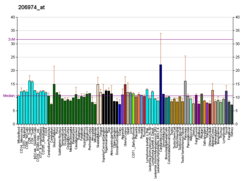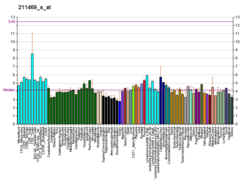| CXCR6 | |||||||||||||||||||||||||||||||||||||||||||||||||||
|---|---|---|---|---|---|---|---|---|---|---|---|---|---|---|---|---|---|---|---|---|---|---|---|---|---|---|---|---|---|---|---|---|---|---|---|---|---|---|---|---|---|---|---|---|---|---|---|---|---|---|---|
| Identifiers | |||||||||||||||||||||||||||||||||||||||||||||||||||
| Aliases | CXCR6 , BONZO, CD186, STRL33, TYMSTR, C-X-C motif chemokine receptor 6 | ||||||||||||||||||||||||||||||||||||||||||||||||||
| External IDs | OMIM: 605163; MGI: 1934582; HomoloGene: 38197; GeneCards: CXCR6; OMA:CXCR6 - orthologs | ||||||||||||||||||||||||||||||||||||||||||||||||||
| |||||||||||||||||||||||||||||||||||||||||||||||||||
| |||||||||||||||||||||||||||||||||||||||||||||||||||
| |||||||||||||||||||||||||||||||||||||||||||||||||||
| |||||||||||||||||||||||||||||||||||||||||||||||||||
| |||||||||||||||||||||||||||||||||||||||||||||||||||
| Wikidata | |||||||||||||||||||||||||||||||||||||||||||||||||||
| |||||||||||||||||||||||||||||||||||||||||||||||||||
C-X-C chemokine receptor type 6 is a protein that in humans is encoded by the CXCR6 gene. [5] [6] [7] CXCR6 has also recently been designated CD186 (cluster of differentiation 186).
Contents
CXCR6 has been identified as an entry coreceptor used by HIV-1 and SIV to enter target cells, in conjunction with CD4. [5] [6] [7] [8] It is a minor coreceptor for HIV-1, nearly all strains of which use CCR5 and/or CXCR4. Most SIV strains can use CXCR6 and recent evidence suggests that in monkeys that serve as the natural hosts of SIV, CXCR6 may be a major coreceptor. [8] CXCR6 was previously known as "Bonzo" and "STRL33" in the HIV/SIV field.





